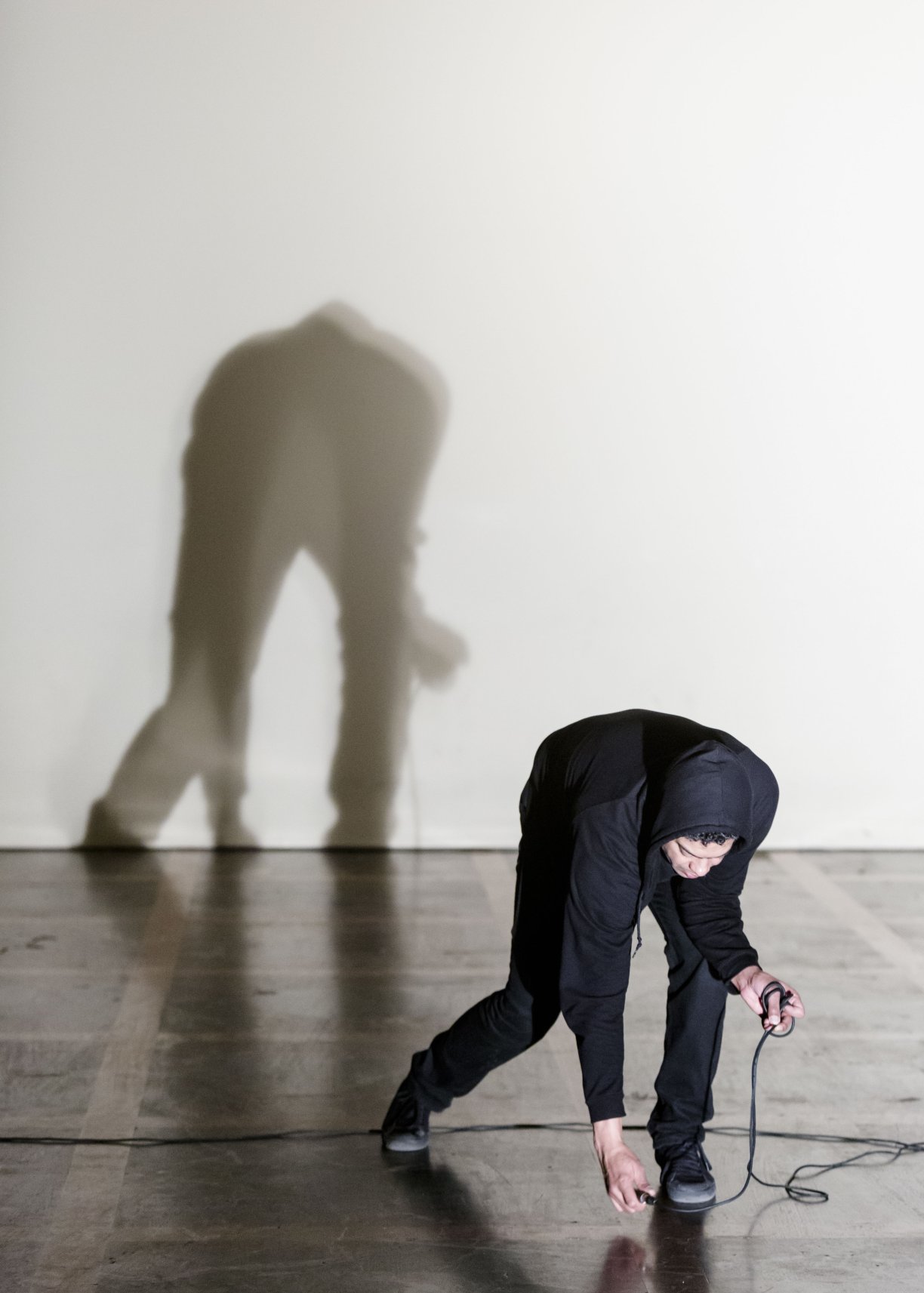The second presentation of Kabir Carter’s series Feelings Are Rooms features a continued investigation of the unique architectural acoustics of ISSUE Project Room’s McKim, Meade & White designed theater space. For his December presentation, Carter draws upon his recent research on spatial acoustics in anechoic rooms and underwater acoustics to produce a temporary sound installation that can be experienced by walking in and through ISSUE’s 4,800 square foot theater space.
Carter’s installation is accessible on December 14th from 4pm until 10pm. At 8pm, a closing reception begins. The installation can also be visited on December 12th and 13th from 4pm until 8pm by appointment only. Please contact kabircarter@gmail.com to facilitate appointments with the artist.
After several years of limiting his primary performance tools to a microphone, mixer, amplifier, loudspeaker, and cabling, Carter has begun working with a variety of spatialized acoustic technologies, applying some of his new working methods to 22 Boerum Place’s hard reflective surfaces and resonant, forty foot high vaulted ceiling.
In his previous presentation at ISSUE, Carter attempted to perform across the threshold of acoustic feedback and execute simple tasks to activate and excite the hard limestone and terra cotta surfaces of 22 Boerum Place’s floor, walls, columns, and ceilings. Since then, Carter has been working in the Department of Signal Processing and Acoustics at Finland's Aalto University. While there, he has become involved with ongoing research on spatialized acoustic capturing and playback systems for airborne, structure-borne, and underwater sound.
Alongside his work at Aalto University, Carter has been researching historical developments in architectural acoustics and psychoacoustics in the twentieth century. After visiting several acoustic research facilities in Denmark, Finland, Germany, and the U.S., he has begun to draw upon his experiences of various purpose built rooms and environments as an inspiration for his new work. Included among these spaces is Nokia Bell Labs’ anechoic room in Murray Hill, New Jersey, where early work with spatialized sound and foil electret microphone technology was developed and refined.
For this presentation, Carter draws upon his ongoing work with room acoustics as well as the work of early composers-in-residence at Bell Labs’ Murray Hill research facilities such as James Tenney and Jean-Claude Risset, who both furthered the development of working with digitally generated noise and dynamically resonant acoustic phenomena as building blocks for future work in electroacoustics.
Kabir Carter’s work has been exhibited and presented throughout Europe and the United States. His interests include architectural acoustics, bioacoustics, body culture, and social dancing in the late twentieth century. He has worked as an educator at the Partisan café in Bergen and for Working Group for Sound in the Expanded Field in Copenhagen and Istanbul. Carter has been a Braunschweig Projects Fellow at Hochschule für Bildende Künste Braunschweig, and a Danish Arts Council DIVA Programme awardee. He is currently artist-in-residence at Aalto University’s Department of Signal Processing and Acoustics. He holds an MFA from the Milton Avery Graduate School of the Arts at Bard College, where he was a Joseph Hartog Fellow.




